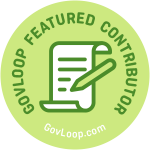The way citizens access government services is rapidly changing. Gone are the days of sitting on hold for an hour or two just to have a simple question answered or being forced to go into a government office to apply for benefits. At every level of the public sector, organizations are leveraging digital tools to  build awesome new portals, websites and programs that deliver better serve citizens.
build awesome new portals, websites and programs that deliver better serve citizens.
But what happens if no one knows about your innovative new program? This is a challenge that public-sector organizations face all too often. Just because you build a new tool doesn’t mean people will automatically know about it— and that can lead to program failure.
Communicating information about your new program to the people it was built for is key to driving program success. But what exactly does this look like? Check out how these three agencies from across government markets achieved program success through a good comms strategy:
The Department of Veteran Affairs’ “My HealtheVet”
The Veterans Affairs Department created the My HealtheVet Newsletter after they realized that available services were not being effectively communicated to veterans. They wanted to make sure that former service members knew they could perform many services online, such as refilling prescriptions, making appointments and sending and receiving messages with their physician. To do that, they decided to perform a major overhaul of their newsletter, which they had been using with only moderate success since 2015.
After making some content changes and driving sign ups, My HealtheVet realized a subscriber gain exceeding 500,000, with website traffic increasing significantly. Through the campaign, veterans have been able to more easily access critical health information that they may not have known about otherwise.
Georgia Department of Natural Resources’ “Outdoor Map”
The Georgia DNR wanted to increase revenue throughout its parks. In order to do this, they launched the Georgia Outdoor Map platform that gave citizens a central page to visit for all of their outdoor needs, whether that was finding spots to hike or a place to camp. They then promoted the new program in all of their outbound digital communications and, as a result, saw additional 30 park reservations a day. This increase grossed an additional $4,500 per week and $234,000 per year in revenue for the agency.
City of Hurst, Texas’ “Hurst Animal Services Webpage”
After the City of Hurst, Texas revamped their website in 2017, they were able to use analytics to discover that pet adoption was one of the top interests for residents. As a result, Hurst decided to create a dedicated webpage to address the topic.
The new page provides a wealth of information and resources for people looking to adopt an animal. In order to ensure people knew about the page, Hurst allowed people visiting the website to opt-in to receive email notifications about the animal services page, as well as posting across social media. These efforts led to 15,000 people subscribing to the email list and nearly 4,000 followers on the Hurst Animal Shelter Facebook page.
If your program isn’t garnering the results you were hoping for, it might be time to take another look at your communication strategy. Make citizens aware of services. Showing them the value of that work is key to success.
Courtney Belme is part of the GovLoop Featured Contributor program, where we feature articles by government voices from all across the country (and world!). To see more Featured Contributor posts, click here.





Leave a Reply
You must be logged in to post a comment.